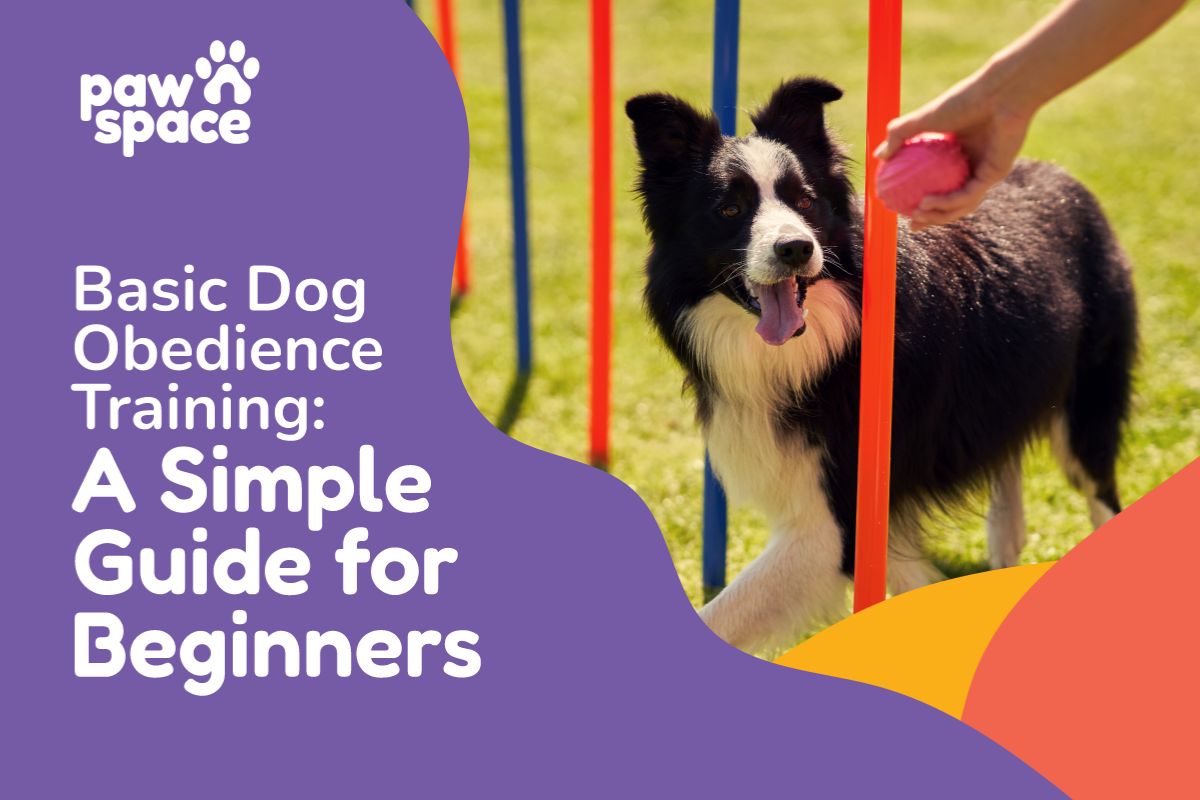Obedience training for your dog is a must to make them well-behaved, safe, and happy. In this simple blog, we shall cover the basic dog obedience training techniques, their benefits, and tips for those just starting.
Consistent practice of such techniques helps with creating an understanding between dog owners and pets, thus leading to a harmonious and joyful relationship.
Table of Contents
Toggle- Introduction
- Our Recent Web Stories
- Benefits of Basic Dog Obedience Training
- 1. Enhanced Communication
- 2. Safety
- 3. Training sessions
- 4. Better Socialisation
- 5. Mental Stimulation
- 6. Fewer Behavioral Problems
- 7. Increased Confidence
- Basic Dog Obedience Training Techniques
- 1. Sit
- 2. Stay
- 3. Come
- 4. Leave It
- 5. Down
- Train your pets with Pawspace
- Conclusion
- FAQs Related to Basic Dog Obedience Training
- 1. How long does it take to train a dog in basic obedience?
- 2. What is the best age to train a dog for obedience?
- 3. How often should I train my dog in basic obedience?
- 4. What do I do if my dog does not respond to commands?
- 5. Can you punish your dog in obedience training?
Introduction
Bringing a new dog into your home is one of the most exciting and joyful things you can do, but with this excitement comes great responsibility: to make sure that your furry friend behaves and obeys. Therefore, the basics of obedience training will serve as the foundation upon which the good behaviour and manners of your dog can be built. Whether you are a first-time dog owner or feel you just need to refresh your dog’s training, this blog will help you in getting started.
Our Recent Web Stories
[web_stories title=”false” excerpt=”false” author=”false” date=”false” archive_link=”true” archive_link_label=”” circle_size=”150″ sharp_corners=”false” image_alignment=”left” number_of_columns=”1″ number_of_stories=”3″ order=”DESC” orderby=”post_title” view=”circles” /]
Benefits of Basic Dog Obedience Training
1. Enhanced Communication
Training a dog enhances communication between you and your pet. With basic command training of a dog, you will easily establish a good line of communication between you and your dog, allowing him to understand the things you expect from him.
2. Safety
It will make your dog safer as he will perform commands to the best abilities he is going to learn in various situations. For example, it will ensure that one’s dog comes back when called to minimise accidents or dangerous situations. The command “leave it” will ensure no ingestion of harmful substances in the dog.
3. Training sessions
Offer time to bond more with your dog, thereby getting a closer, stronger relationship. Positive reinforcement with consistent training tends to foster a trusting and respectful relationship, making your companionship both harmonious and enjoyable.
4. Better Socialisation
Obedience training helps improve your dog’s socialisation skills. Your dog learns to behave appropriately in various social settings through exposure to different environments, people, and other dogs. This can reduce anxiety and aggression, making your dog more confident and well-adjusted.
5. Mental Stimulation
Training exercises stimulate your dog’s mind and keep it active. Mental stimulation is essential to prevent boredom and destructive behaviours, such as chewing or digging. Training activities challenge your dog’s cognitive abilities and keep them mentally sharp.
6. Fewer Behavioral Problems
Training habitually will help avoid and rectify behavioural problems like barking too much, jumping, or pulling on the leash. Your dog will behave appropriately and in a disciplined environment that promotes positive behaviour if trained on how to behave.
7. Increased Confidence
Training increases the confidence of your dog by giving him a sense of accomplishment and purpose. The feeling of accomplishment from mastering commands and positive reinforcement enhances the self-esteem of your dog, thus increasing his confidence.
Basic Dog Obedience Training Techniques
1. Sit
It is one of the most basic commands: to teach your dog to sit. Place a treat next to your dog’s nose and then slowly move it up. As he follows the treat with his head, his bottom will automatically drop down to the floor. Once he sits, praise him and give him the treat several times until he gets the hang of it.
2. Stay
The “stay” command gives you the ability to allow your dog to stay in a location. Begin by telling your dog to sit down. Next, with your hand facing you and your palm extended, say “stay” and step back several feet. If your dog remains in the sitting position, praise your dog and treat it. Continue to increase the distance and time for the stay command because this will be helpful for your dog to adapt.
3. Come
Teaching your dog to come can save him from danger. Start by capturing your dog’s attention and saying “Come” in an upbeat, welcoming voice. When your dog reaches you, commend him and reward him with a treat. Practice this command in various settings and with different degrees of distractions to ensure that your dog responds every time.
4. Leave It
The “leave it” command is useful for preventing your dog from picking up or ingesting unwanted items. Begin by holding a treat in one hand and showing it to your dog. Close your hand around the treat and say, “Leave it.” When your dog stops trying to get the treat and looks away, reward them with praise and a different treat from your other hand. Repeat this exercise until your dog learns the command.
5. Down
Teaching your dog to lie down is one of the very useful commands for calming your dog in various situations. Begin by asking your dog to sit. Then, have a treat near the ground and slowly move it away from your dog. As your dog follows the treat, their body will naturally lower into a lying-down position. Once your dog is on the floor, praise them and give them the treat. This command should be practiced regularly so that your dog responds every time.
Train your pets with Pawspace
At Pawspace, we are dedicated to providing exceptional care and companionship for your beloved pets. Our services include pet grooming, pet boarding, pet sitting, doorstep dog training, fresh dog food, dog walking, pet taxi/cab, pet relocation, car grooming, and pet funeral services.
As the biggest pet care ecosystem in India, we boast about being a cage-free and cruelty-free entity, where all vetted pet sitters and service providers treat their pets like family.
Conclusion
Basic obedience commands are very essential for your dog’s safety, good behaviour, and happiness. Teaching basic commands and practising them daily will help you build an intense relationship, positively and organisationally.
The benefit of obedience training is more than having a good-behaved dog-they help in general well-being and quality of life for your dog. Positively reinforce, be patient, and play the game.
Also, check the frequent updates on our Pawspace Instagram page
FAQs Related to Basic Dog Obedience Training
1. How long does it take to train a dog in basic obedience?
The time taken to train a dog in basic obedience varies with the age, temperament, and previous training experience of the dog. Noticeable improvements can be seen within a few weeks with consistent training sessions, positive reinforcement, and patience.
2. What is the best age to train a dog for obedience?
The best time to train a dog in obedience training is as early as eight weeks old. Puppies learn tricks and command more than the older dogs. They can also be trained during the older age with constant practice.
3. How often should I train my dog in basic obedience?
Short, frequent training sessions are better than long, infrequent ones. You want to train your dog for 10-15 minutes, two to three times a day, to keep them focused and interested.
4. What do I do if my dog does not respond to commands?
If your dog is not responding the way you expected, try using a more appealing treat, practising in a quieter environment, or breaking the command into smaller steps. Consistency and positive reinforcement are the keys to successful training.
5. Can you punish your dog in obedience training?
No, punishment is not recommended for dog obedience training. Positive reinforcement with treats, praise, and play is much more effective in teaching while establishing a trusting and respectful relationship with your dog.


















